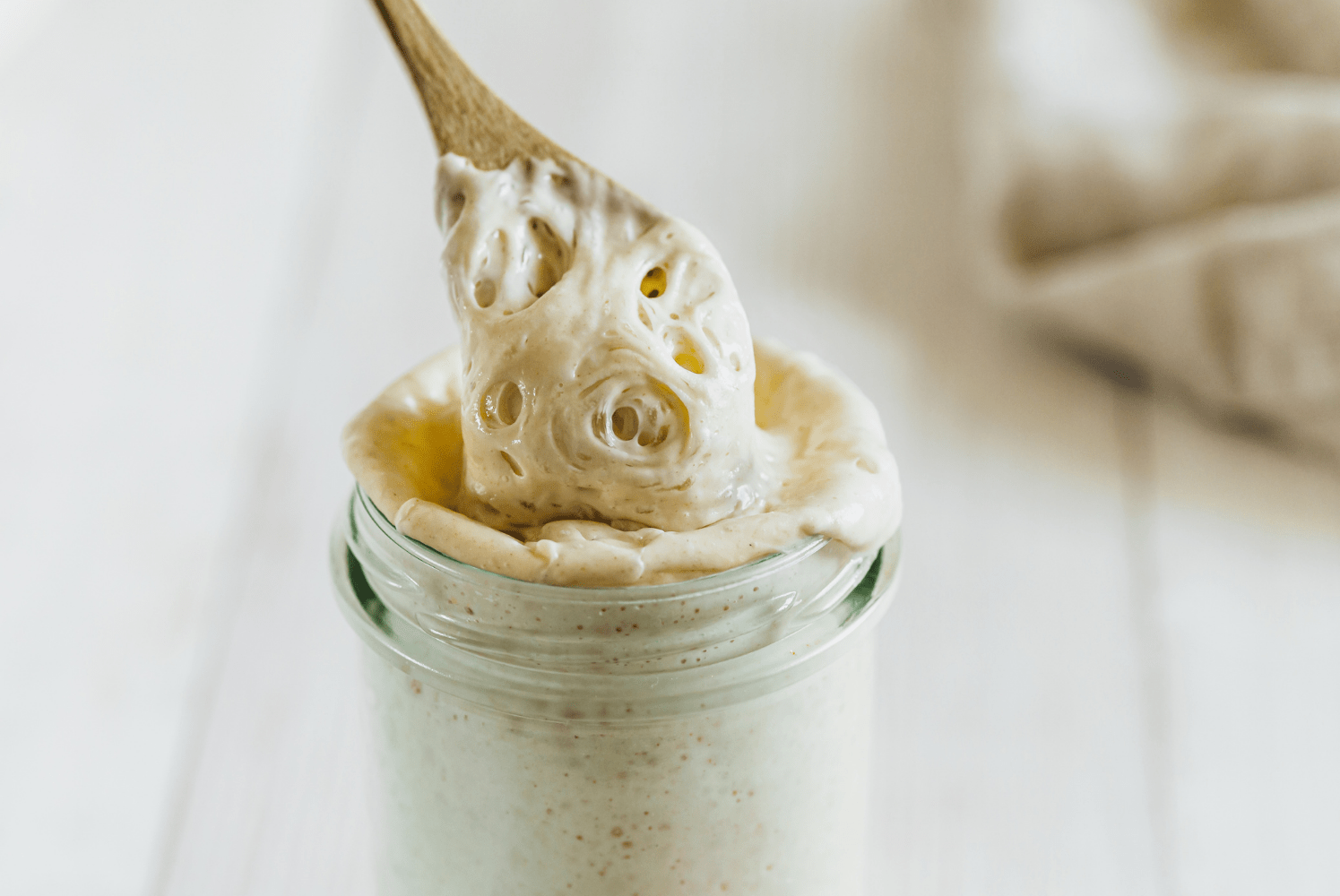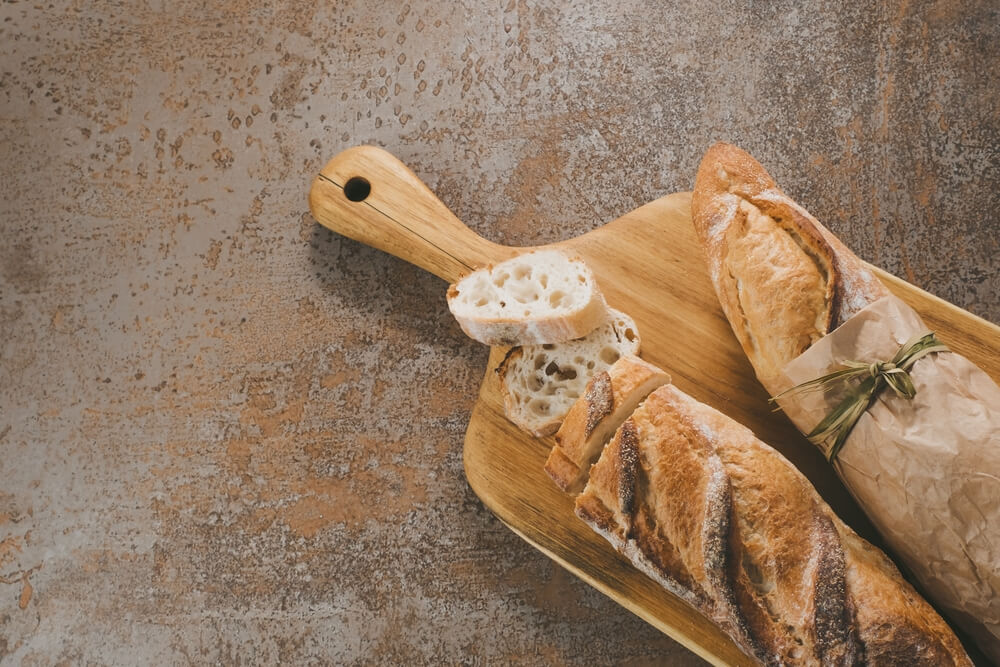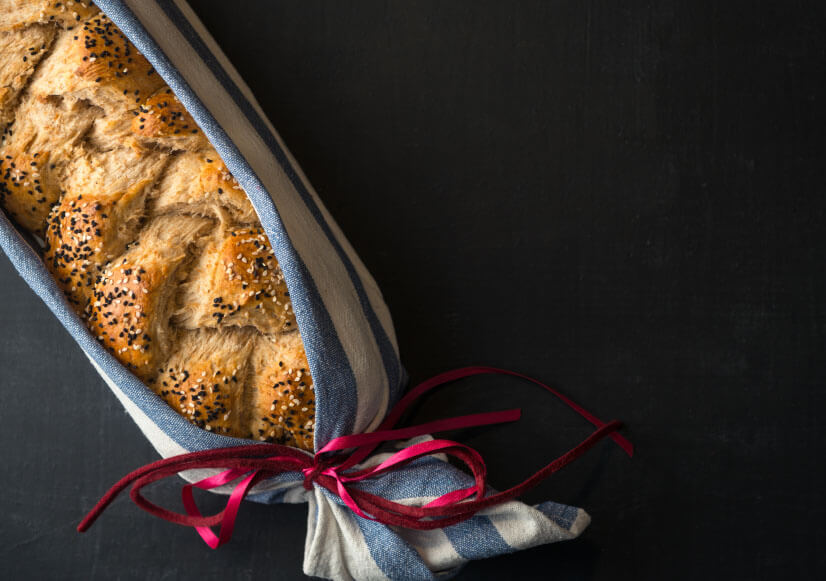If My Starter Suddenly Stops Being Active and Bubbly After A Couple Of Days, Did I Ruin It?
It’s common to see a false surge in your sourdough starter, but don’t panic. It’s just a sign that the starter needs to balance the yeast and bacteria. The starter is fine, please trust the process and keep going.
What Kind Of Smell Should The Starter Produce?
It’s not uncommon for new starters to have a stinky cheese smell to it. Your starter hasn’t gone rancid; just needs to be balanced. You want to make sure to feed it. Mature sourdough starters have a yeasty-smell, a bit sour, a bit sweet. When a starter smells like vinegar or alcohol, it needs more food.
I Missed My Starter’s Feeding Time. What Do I Do Now?
This is a common habit and will cause the start to smell like alcohol and become less vibrant. But don’t worry, just go back to your feeding routine as soon as possible. You should see the starter come back to life. It’ll take some time to build the starter, but it’s very difficult to kill them too.
What If I Can’t Feed My Starter For A Couple Of Days Or Weeks?
If you have a problem where you can’t feed the starter for a couple of days or week, never fear. Just place the starter in a clean jar – something that provides plenty of space so it can rise and fall. Leave it in the refrigerator when you don’t have time to deal with it.
The starter reacts to the cold temperature by cooling the activity and “putting it to sleep.” It takes a lot to kill a starter. It can go without feedings for months. When you have the time to deal with the starter, take it out and go back to feeding it daily. Your starter will become active again.
There is something to note about placing a sourdough starter in the refrigerator. After some time, it begins to form a layer of hooch. This is normal; you can either stir it back in or pour it out when you want to bring it back to life.
Is It Okay To Change Flour Types To Feed The Starter?
If you no longer have the flour type you were using to feed the starter, it’s fine to use another flour for a day or two. But, you should go back to the other flour type as soon as you’re able. The reason is that the starter creates certain groups of bacteria and wild yeasts. This is what keeps the starter stable and active. If you change the flour type, it could create an imbalance and affect the starter’s performance.
What Are The Signs That The Starter Is Ready To Work?
There are two tests your starter must pass. First, it needs to have doubled in size in 4 -6 hours after you fed it. If it does, the starter is strong enough to make bread. Second, you need to do a floating test. This means fill a cup up with water, room-temperature. Drop the starter’s teaspoon into the water. If it’s floating, the starter can be used. A sinking spoon means the starter needs more time.
What Is The One Ingredient Your Starter Needs?
The one ingredient your starter needs to ensure success is not what is in it but what you give it. PATIENCE. You need to be patient. Every starter is going to be different because the environment it is in will be different. If you don’t see bubbles after five or six days, it doesn’t mean something went wrong. Just continue doing what you’re doing, and it’ll come out the way you want.
When I try to build up a new starter in TAS winter/spring time, it takes me 26 days until I saw some decent rise with my starter. If you haven’t see any sign that your starter is working, please be patient and trust the process. Remember, you just need to do this once in your life, then the starter can produce so many beautiful breads for you and your family.
Of course, after you had a successful starter, the next thing you can't miss is the banneton to get your journey started. Have fun!





